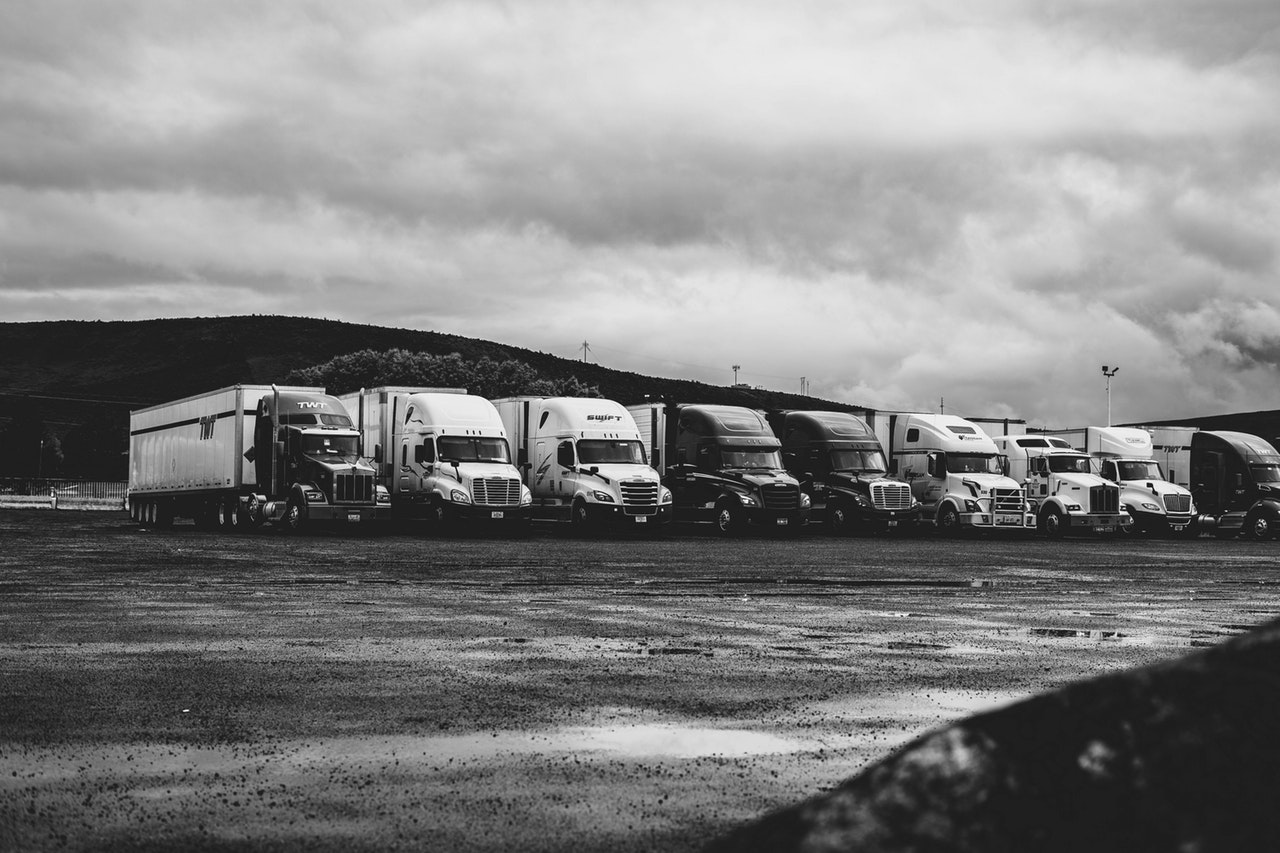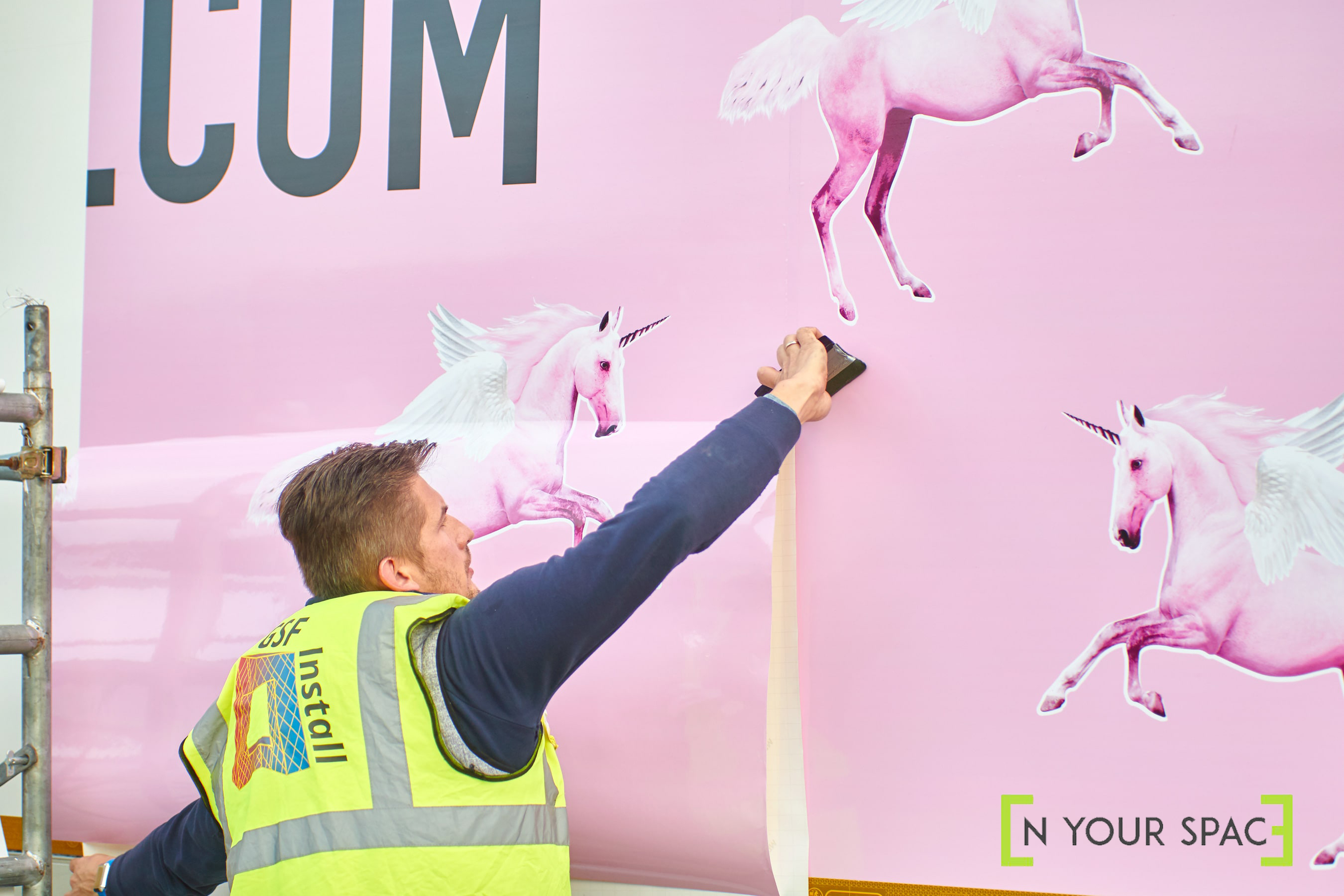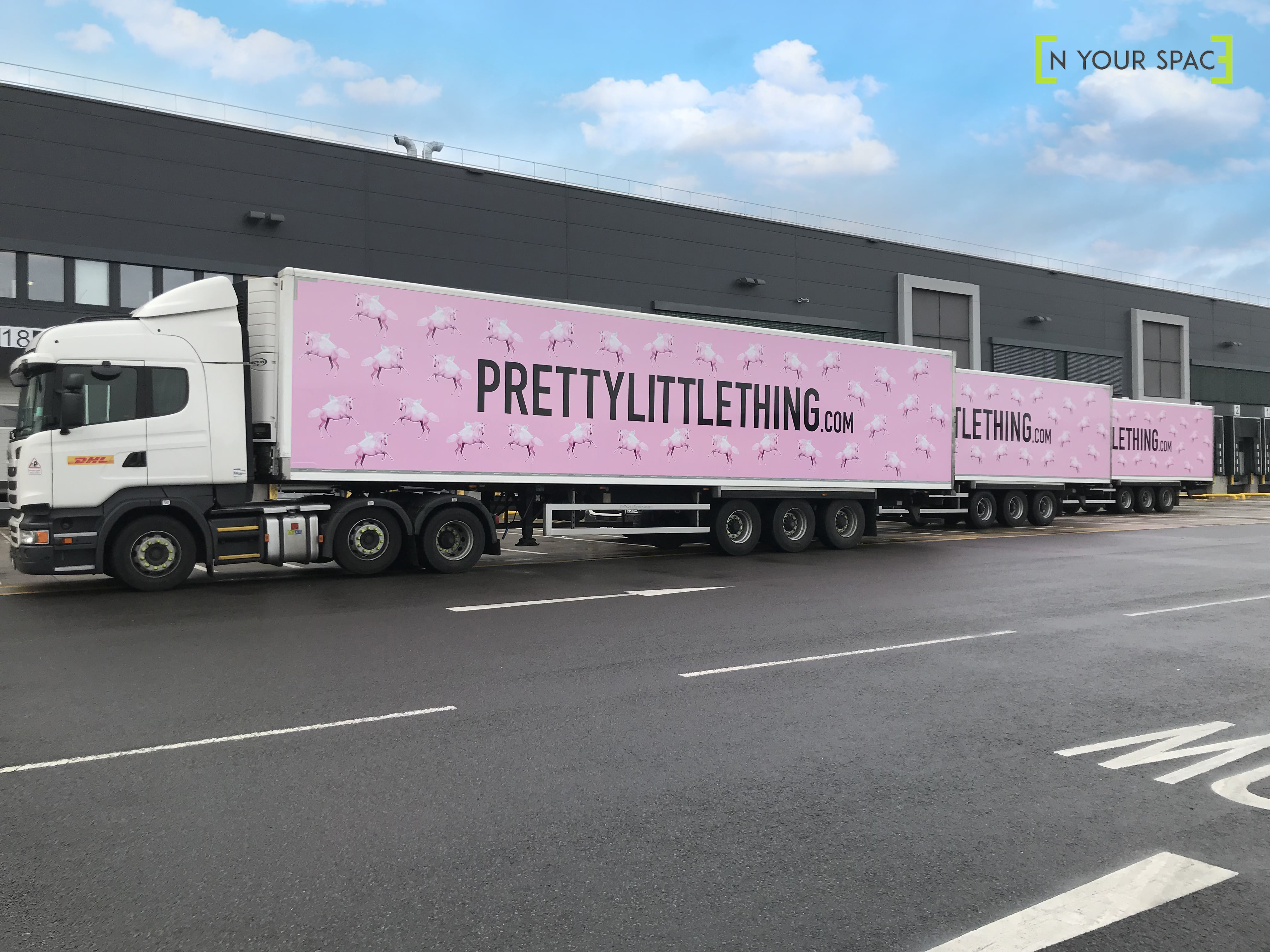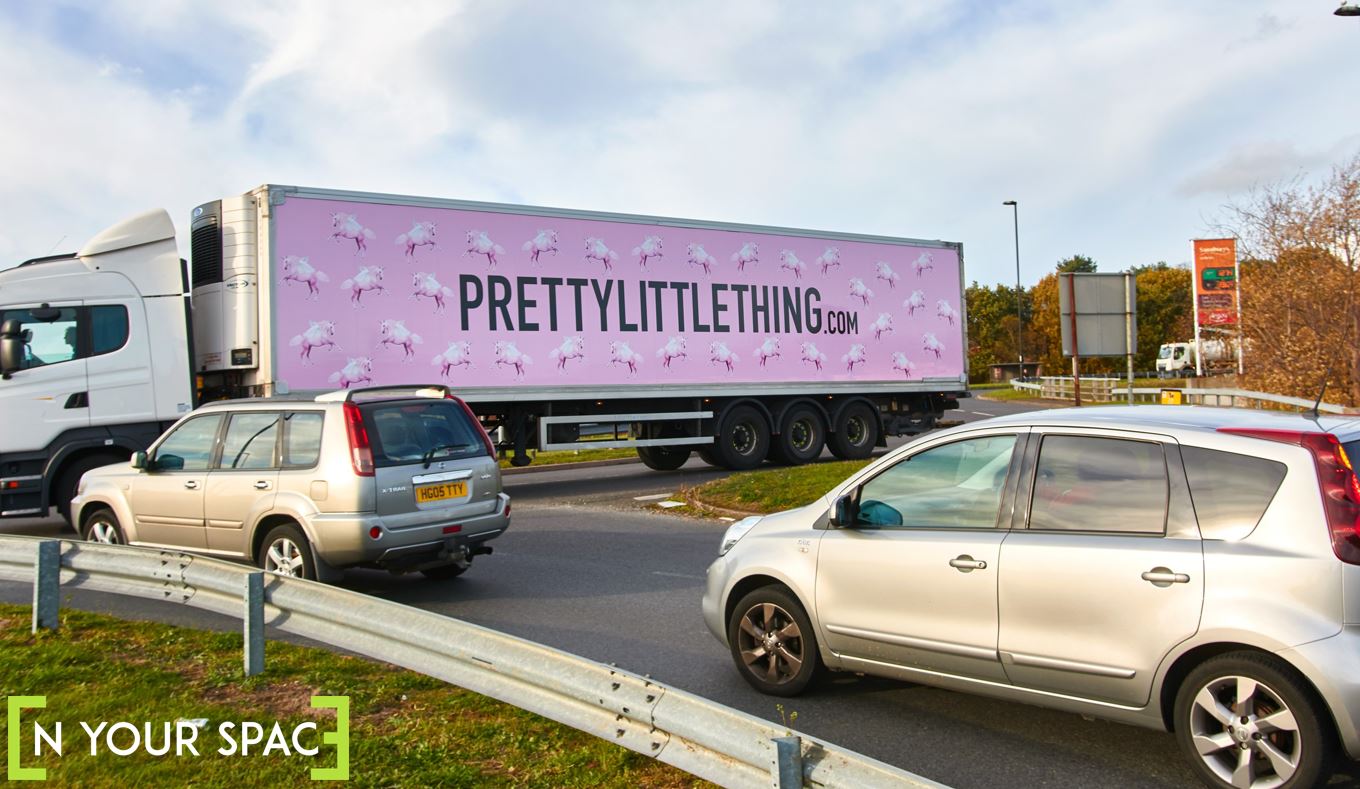Looking for some advice?
Despite the ongoing challenges presented by Covid19, we’re here to help. If you’re working on a large format project, and have any questions, please get in touch via our contact form – our expert project managers are on hand to answer any of your questions.
Truck media is one of the most unique and impactful forms of outdoor advertising, and PressOn are proud to print and install the liveries for In Your Space, pioneering providers of world class truck media campaigns. In Your Space offer an outstanding service that truly is the ‘gold standard’ in truck media advertising.
We spoke to In Your Space’s CEO and founder, Jonathan Bramley, about In Your Space, truck media more broadly, and what it can mean for brands…
How does the process of organising truck media work?
“The process of organising truck advertising is a ‘clean hands’ operation. First, the brand looking to purchase media space on trucks will identify their intent, and pinpoint the geography of where they need their campaign to run (nationally, locally, etc.)
Then, once this has been confirmed with In Your Space, we identify and contact the fleet operators that best meet their criteria. We work with a huge network of operators, so it’s rarely hard to find an ideal fit.
After this is sorted, the client produces the artwork, which gets sent over to PressOn for print and installation. This last phase is the part that would have historically taken the longest, but with PressOn the turnaround is extremely rapid.”
What would you say should be the top 3 considerations for a client planning to utilise truck/vehicle advertising?
“The first thing a brand needs to think about is the timescale and longevity of their campaign. Campaigns usually run for around 12 months or longer, so there’s not much point talking about a summer product launch if it won’t be relevant to consumers for half of the year.
The second thing would be messaging. You need to consider that the audience is mobile; the frequency of exposure is low, and they’ll see the trucks in different places at different times, and you’ve got to make some accommodations for this. Messaging and imagery needs to be very clear, simple, and memorable. You need to make a statement for your brand quickly and efficiently.
Finally, I think it’s important to recognise the situations in which truck media works brilliantly, and the situations when it might not. Every channel has limitations, it’s just important to work within them (and not trying to force a square peg into a round hole.)
When it comes to truck media, this really comes down to immediacy. Trucks don’t generate immediate results – it’s not a direct response mechanism. You also can’t change the copy or content of your graphics as easily as with something like digital.
Some advertisers prefer to go with a good reach, large frequency approach in terms of the visibility of their outdoor media. Trucks aren’t like a billboard that you walk past at the same time in the same place every day. You might see a truck with an advert for a specific brand at the beginning of the month, but not see it again until several weeks later. This is how truck media works – it’s a low frequency, drip feed exposure, but the reach is absolutely massive.”
Are there any misconceptions about truck media?
“There are some negatives that people tout that simply aren’t true – there’s a misconception, for instance, that trucks only travel at night time, which is simply not the case. They’re on the road 24/7.
There’s also a belief that over time, liveries will become dirty or damaged, which can negatively impact a brand’s image. This comes down entirely to the fleet operators a brand works with – at In Your Space, for instance, we’re very careful to only work with meticulous fleet operators who regularly maintain and clean their vehicles. Ultimately, it’s just a case of ‘you get what you pay for’.”
How does the route a truck takes impact the kind of advertising you should use?
“Well, firstly it impacts the size of the truck. Larger vehicles, such as 44-foot trucks, cover national paths. In the UK, they usually go from Milton Keynes, to Glasgow, Leeds, and Bristol. These are ideal for national campaigns, with simple and broad messaging to increase brand awareness.
Smaller vehicles have more localised deliveries. They belong to a depot, which they return to at the end of their route. These smaller, circuitous routes lend themselves to regional campaigns. If a client wanted to target Manchester locals, we would use one of these operators to create a very localised campaign – this means the kind of advertising could be far more specific.”
What different format options are there when it comes to advertising on trucks?
“When it comes to the much larger vehicles, which are ideal for national campaigns, the different types of vehicle affect the format. Large trucks are either ‘full rack’ rigid vehicles, or they’re articulated (two sections with a pivot point in the middle).
For these kinds of vehicles, it can actually be more effective for brands to advertise just on the head or rear panels of the vehicle – it’s more economic, as this involved a very low production cost, and is often easier for motorists to see (rather than a 44-foot long graphic, although these are still possible!).”
Is it possible to track how effective a campaign has been? How?
“It is possible, yes. The challenges with tracking the impact of a campaign are similar to those when evaluating the effectiveness of something like taxi wraps – we put together what we call a ‘campaign analysis report’ (CAR) to break everything down.
We consult with the brand before, during, and after a campaign to work out how to effectively monitor success rates and impact. We usually recommend conducting top-of-mind-awareness analysis if possible, to offer comparisons before and after a campaign, but we appreciate not every brand is in a position to do that!
We look at audience profiles, and the movement of fleets – good fleets include satellite tracking which means we can evaluate where the vehicles have been, for how long, and correlate other statistics to track the effectiveness of a campaign.
As with many other types out out of home media analysis, it’s not an exact science currently. The real challenge can be communicating the effectiveness to media buyers who might not necessarily fall into the audience or demographic a truck campaign would target.
If you rarely use the motorway, and don’t drive daily, it can be hard to relate or empathise with the average type of consumer a fleet targets. To really understand the kind of impact a truck advert can have, you need to put yourself in the shoes of a commuter, stuck in traffic behind or alongside a truck for 20 minutes. Then picture the difference if that truck was dusty and blank, or covered in eye-catching graphics. That’s the kind of exposure truck media offers, to millions of motorists, on a 24/7 basis, 365 days a year.”
Any last tips for media buyers considering truck advertising?
“Truck media represents such a unique and fantastic opportunity, but without trying to sound like I’m scaremongering, it can be a bit of a double-edged sword. I think it’s important to just make sure you don’t miss anything, or get anything wrong. This usually comes down to the media operator you choose to work with, but it’s important to understand the implications.
If a campaign isn’t handled correctly – if your graphics aren’t installed with a reputable fleet or logistics operator, for instance – it’s often not easy to remove them. Poor quality vinyl, poor quality graphics, and poorly maintained vehicles can be really damaging for a brand.
One thing we’ve encountered is badly chosen vinyl, which isn’t easily removed. This creates a problem for fleets and brands, as it means the trucks have to be off the road for longer than usual, and arranging the removal can be very expensive.
There are also budget options out there, like using the soft curtain sides of certain types of trucks for advertising. Ultimately, this comes down again to ‘you get what you pay for’ as these just don’t look as impressive or high-end as vinyl graphics.
Ultimately, you need to work with a media provider who really cares about the quality and impact of your campaign, and making sure this is achieved to the highest standard, for its entire duration. That’s why In Your Space work with PressOn, because together, we can ensure the very best truck media services for our clients.”





